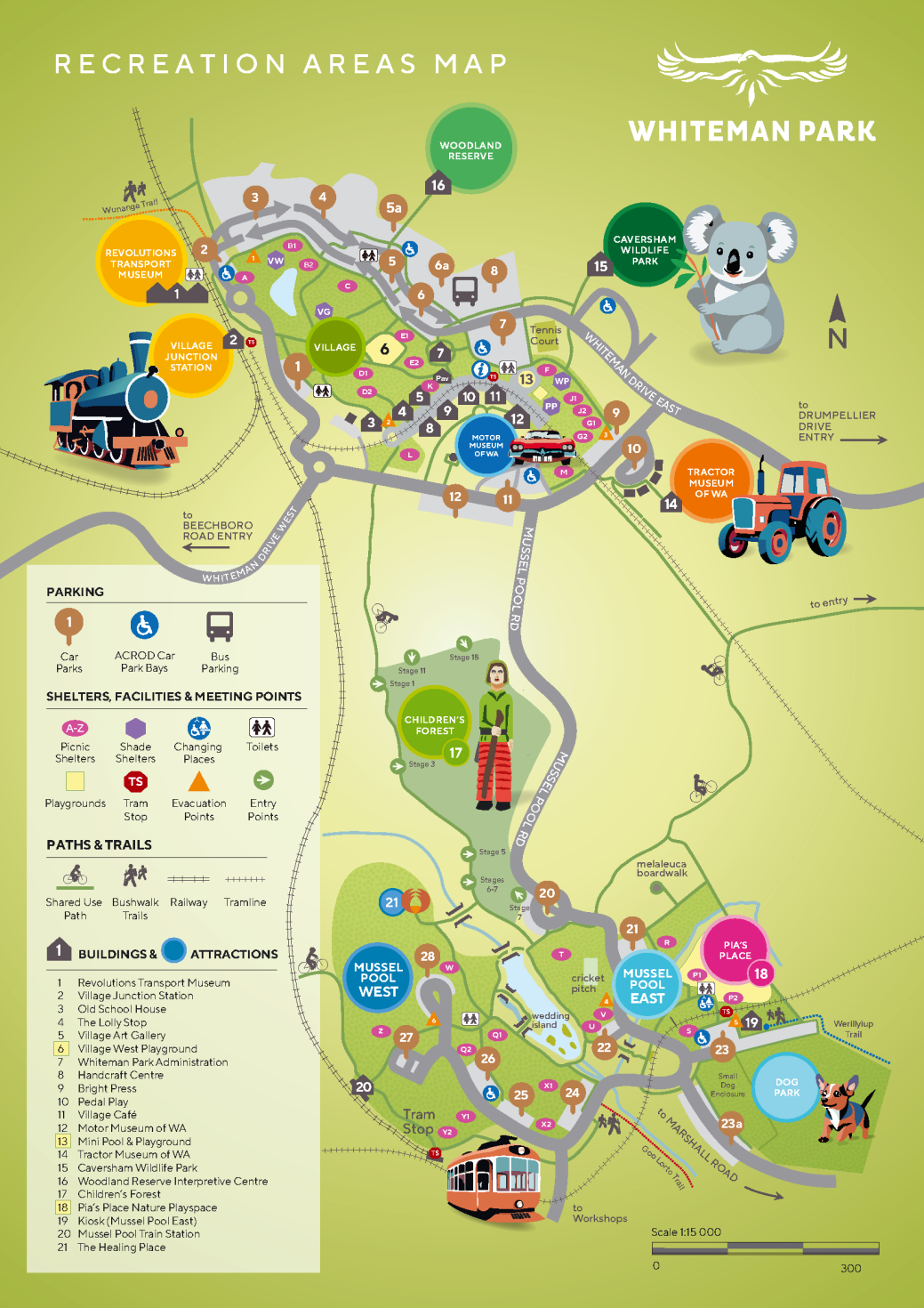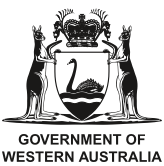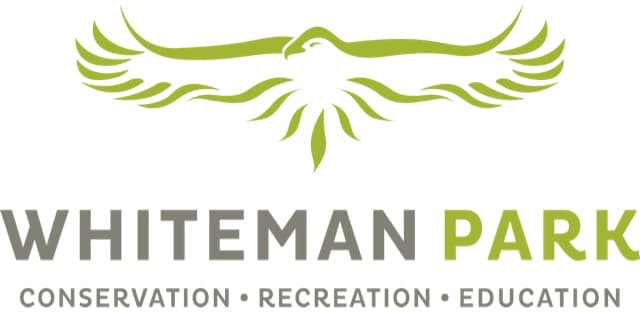Possum 'magic' at Whiteman Park
24 September 2021
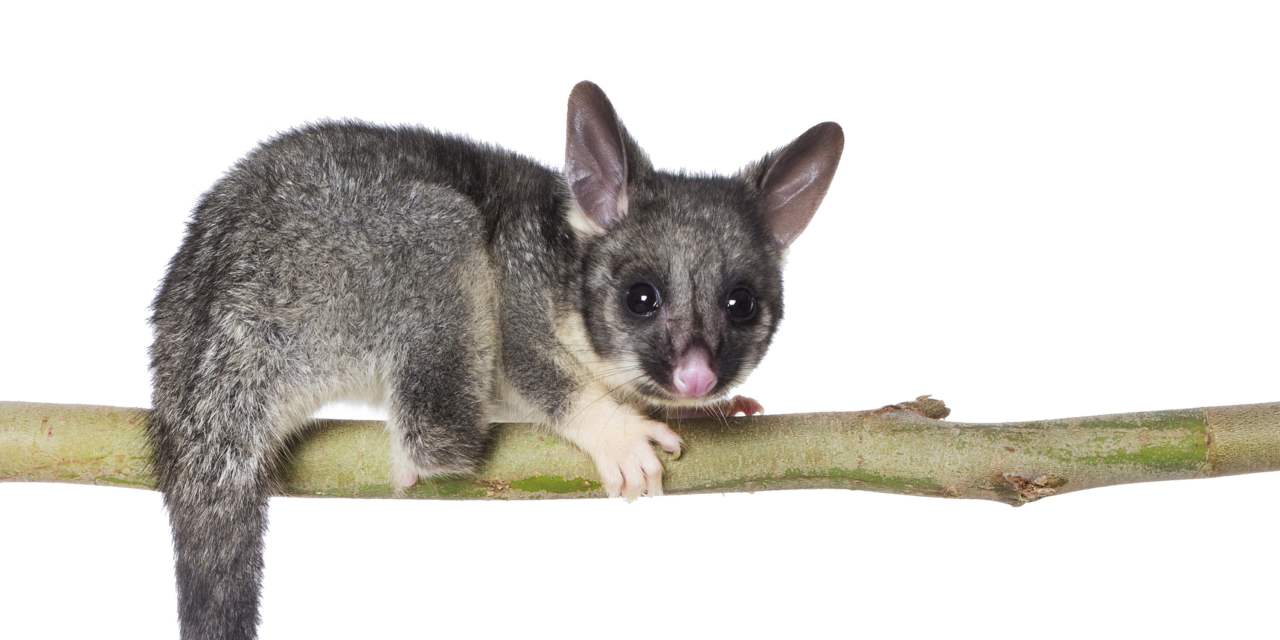
South-west WA is internationally recognised as a biodiversity hotspot, with many plant and animal species only occurring in this region. Much of this unique wildlife is threatened by habitat loss, highlighting the importance of parks and reserves for conservation.
Whiteman Park is an important natural space in which a suite of unique biodiversity is conserved and protected for future generations. One key part of a healthy natural environment is the presence of old-growth trees, often referred to as ‘living hotels’ in our landscape because they cater for an immensely diverse range of fauna, from tiny invertebrates to larger birds and mammals. A number of these animals, known as hollow-dependent species, rely on access to the hollows that are formed in these older trees for nesting and resting sites. One such species reliant on tree-hollows for refuge during the daytime is the koomal, the Noongar word for the common brush-tail possum (Trichosurus vulpecula).
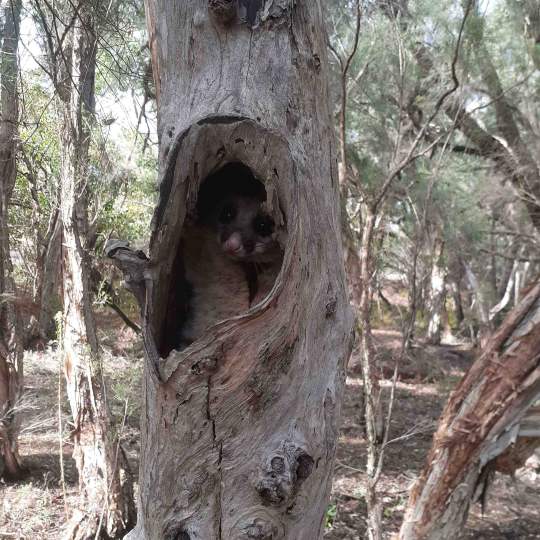
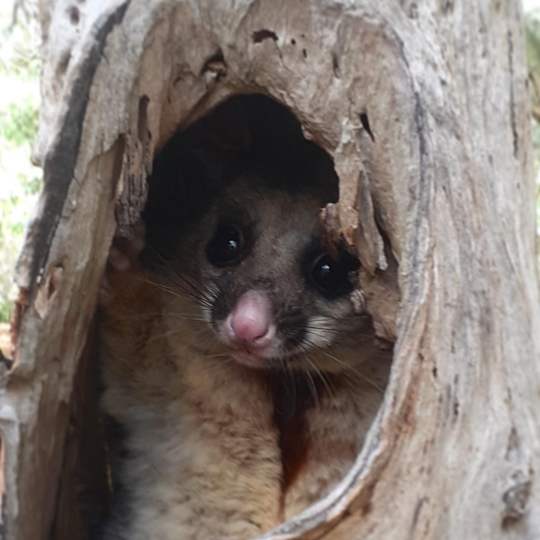
Images (L-R): brush-tail possum habitat; a brush-tail possum in a hollow
In 2018, it became evident that brush-tail possums residing near the paperbark creek-line around Mussel Pool were struggling to find suitable denning sites. The regrowth eucalypt bushland surrounding this wetland also lacked many suitable hollows. It was decided that artificial den-sites in the form of nest-boxes could be installed to increase available habitat for the local possums. Eleven ‘flat pack’ nest-boxes made in Victoria were installed by local ecologist Simon Cherriman, from The Re-Cyc-Ology Project. An exciting component of this project was the implementation of an ongoing monitoring program, to measure its progress.
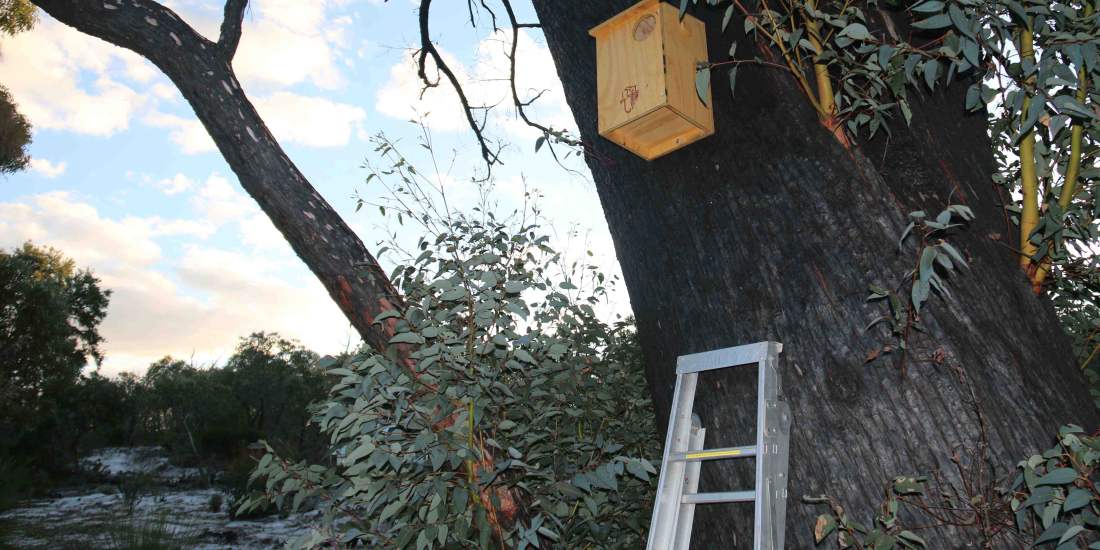
Image: looking up at a possum box
For the last three years, The Re-Cyc-Ology Project has carried out triennial nest-box checks for the Park, which have revealed two very interesting stories!
Firstly, possums discovered the boxes quickly and were regularly observed sleeping inside them. This was a good sign that this habitat supplementation was needed. Inspections showed up to nine possums denning in the 11 boxes, and on a number of occasions, females with dependent joeys were noted sleeping together inside their quiet daytime refuges.
The second finding, however, was more concerning. It became clear that the occupancy rate of a feral species, the European honey bee (Apis melifera), was increasing, with up to 50% of boxes full of bee-hives.
Despite global declines in this important pollinator, these introduced insects are extremely harmful to wildlife in Australia, invading important tree-hollows at a rapid rate, and stinging to death any native tenants. Feral honey bees have been identified as an important factor contributing to the decline of some hollow-dependent species in south-west WA, including the Threatened black cockatoos. Once a hollow is full of bees, it usually becomes permanently unavailable to wildlife, because, even if the bees depart, the wax structures used to house their honeycomb take years to break apart and allow access again.
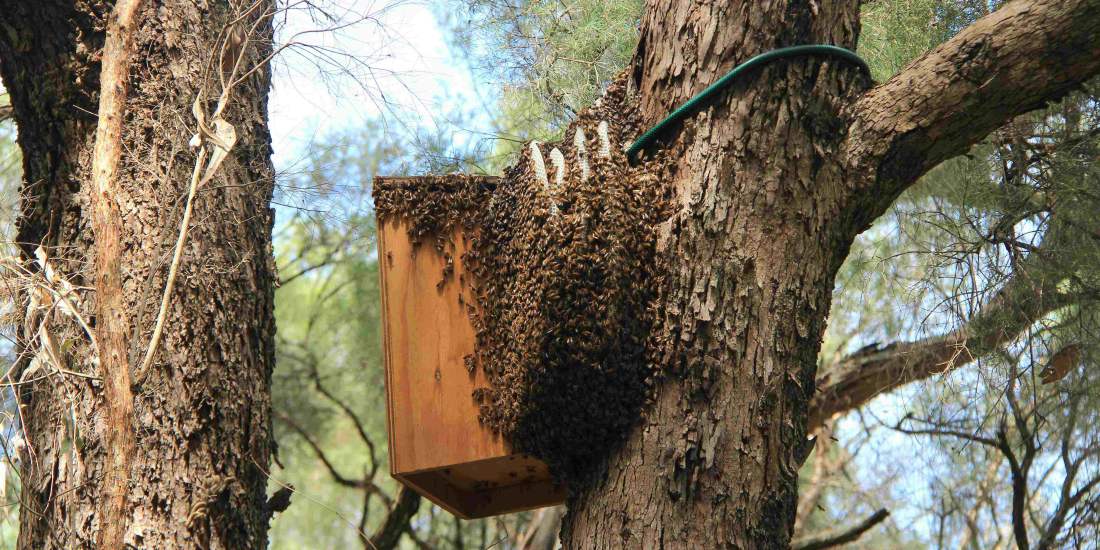
Image: European bees on a possum box
As well as their impacts to natural hollows, honey bees have been a known nest-box pest for many years. In the warmer months, most hives divide and part of the colony follows the new queen as she moves to colonise a new location. Being in close proximity to new bee colonies, it appeared sleeping possums were under pressure from an expanding feral bee population. The increase in honey bees use raised questions as to why they favoured these particular nest-boxes:
- Was it that the construction materials – thin, untreated plywood – was more attractive to bees than other materials?
- Or could it be the proximity to a year-round water source?
- And, what could be done to make these nest-boxes more bee resistant?
In May this year, the Re-Cyc-Ology Project designed, constructed and installed ten new nest-boxes using sturdy, recycled form-ply. The aim was to provide additional habitat for possums, and test whether using different construction material could help minimise bee uptake. Over 100 boxes of this design have been installed elsewhere in south-west WA with no records of bee invasion. Ongoing monitoring of these (as well as the original) nest-boxes will shed more light on the factors contributing to the ‘bee problem’ here at Whiteman Park.
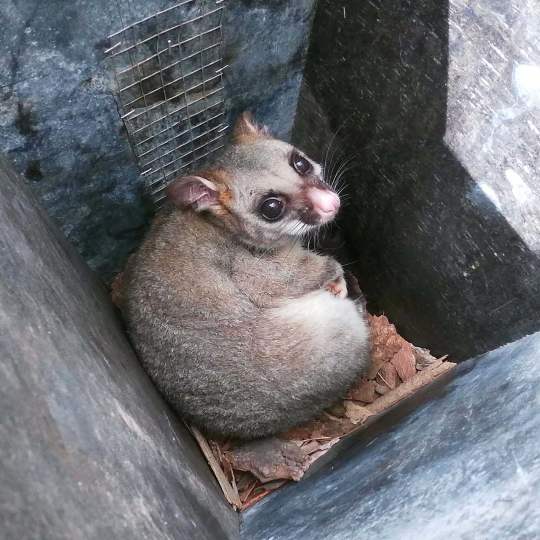
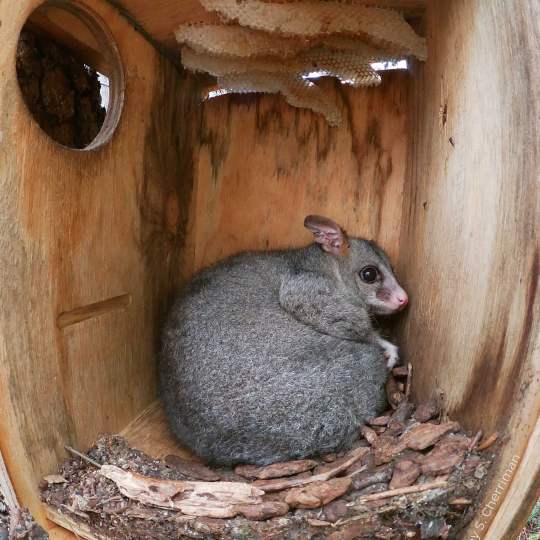
Images (L-R): a brush-tail possum nesting in a possum box; the juvenile brush-tail possum nesting below honeycomb (photos by S. Cherriman)
Early results from the new monitoring regime are encouraging, with half of the new boxes used by possums after only two months. Interestingly, we have also observed that nest-boxes containing feral bee colonies in early 2021 have since been vacated (for unknown reasons). Resourceful possums were quick to capitalise on the vacancies, and one nest-box even housed a juvenile brushtail that had pushed through the residual beeswax to take up denning rights!
We are excited to continue regular nest-box monitoring with Simon and Danielle from The Re-Cyc-Ology Project and collect information that will allow us to care for these precious marsupials well into the future!
Written on behalf of Whiteman Park by Simon Cherriman and Danielle Crichton from The Re-Cyc-Ology Project.
